The Nutrient Film Technique or NFT is a common hydroponic growing technique that has been adapted to aquaponics. The technique is favored for its simple setup and ease of use with many popular garden plants, but as with any system, there are some issues growers may encounter. The system operates by providing a slow, steady stream of nutrient-rich water to the plant roots. The water is circulated using a combination of pumping and gravity draining. Unlike an Ebb and Flow system, Nutrient Film aquaponics does not require a flood period – just a consistent flow of water from the fish tank. By understanding the advantages of Nutrient Film Technique, learning about the common problems and how to overcome them, and choosing the best plants for your system, you can quickly harness the power of NFT for aquaponics.
Advantages of Nutrient Film Technique
NFT comes with a number of benefits, which has driven it into popularity first as a hydroponic technique and more recently in aquaponics. This style of aquaponic setup provides many of the benefits of a flood and drain system, without requiring complicated timers or a bell siphon be included. Some of the key advantages of Nutrient Film in aquaponics include:
- Highly Oxygenated Roots – The design contributes to this advantage. Part of the roots of each plant remains above the water line at all times. This allows them to expel waste gasses and absorb oxygen. It essentially keeps the plants from drowning while ensuring the plant always has access to the nutrient-rich water it needs.
- Ease of Setup – Setting up this style of system is relatively simple. They do not require very much equipment. The trays or channels are easy to install, do not require a lot of piping or space, and because they use gravity to drain back into the tank won’t require any draining mechanisms. They are also easy to expand.
- Constant Flow Benefits – Another advantage of Nutrient Film Technique is the constant flow of water. This helps the system in a number of ways. First, flowing water prevents stagnation, which can lead to the growth of algae and fungus. This consistent movement of the water through the system also prevents build-up. Additionally, it ensures that nutrient-rich water is always readily available for the plants increasing their growth and overall health.
- Grow Media Not Required – Most Nutrient Film setups do not require a grow media. Generally, the plants are set into the channels or trays through cutouts that allow the root to remain completely hidden from light with easy access to the water flow. This type of setup does not require a grow media, which can save in costs and maintenance time.
- Easy Root Checks – Because the plants are grown in shallow channels or trays without grow media, it is easy to check on how your roots are growing. Looking inside should allow you to confirm root growth and look for obvious problems that may impact the health and growth of the plants.
Nutrient Film Technique Common Problems
NFT setups can present some problems, particularly in operation, which may make them a little more difficult to manage at first. Trial and error have shown that, although difficulties may always arise, they can be overcome through proper planning, regular monitoring, and routine maintenance. Knowing what to watch out for is half the battle when it comes to ensuring your Nutrient Film Technique setup operates smoothly and produces the yield you want it to. Common problems include damaged plants or stunted growth because of issues with root temperature, exposure to light, plant support, or access to the nutrient flow. These can be overcome, as long as you know what to expect.
When planning your Nutrient Film Technique aquaponic system, it is important to consider how the setup will vary from other common aquaponic systems. The shallow trays, the steady stream of water, and lack of grow media all require some special planning to ensure success. Without grow media, root temperature is harder to maintain. This is especially troublesome if your system will be exposed to temperature variations. Take some extra care to focus on insulation or temperature regulation to overcome this issue. Similarly, the absence of grow media means you will need to take care to ensure the roots are not exposed to light – both for their healthy growth and to prevent algae growth in the system.
Finally, routine maintenance is especially important in this style of setup. Two of the key components must be checked regularly to ensure proper performance, or you could easily lose the entire crop. First, the water pump that brings water into the system. If the pump stops, the plants will quickly struggle and die if left unattended. Clogging can also have a disastrous effect, leaving too much water in the system and drowning the plants. The most common source of clogs in this style of system are the roots themselves, so they need to be checked regularly and either moved or trimmed back as needed.
Best Plants for NFT System
With the proper planning and care, any plant can be successful in a Nutrient Film aquaponic system. NFTs offer a lot of advantages that result in fast growth and plentiful yields. However, some plant varieties adapt more easily to the shallow trays of this style of system, requiring less care and support. The types of plants that grow easiest in a Nutrient Film setup are those with shallower root growth and less plant height and weight. This makes it particularly easy to grow leafy greens like lettuces and herbs. Some of the best plants for your aquaponic system include:
- Romaine lettuce
- Bibb lettuce
- Kale
- Iceberg lettuce
- Swiss chard
- Basil
- Mint
- Sage
- Parsley
- Oregano
- Mustard greens
- Bok Choi
- Nasturtiums
- Pansies
It is possible to grow other larger plant varieties in this type of system, but they will require some extra care and support. Any plant with a longer root base will require a deeper tray and may need netting or other supports to keep the plant upright without grow media. Some plants that are possible to grow with extra care using Nutrient Film include:
- Tomatoes
- Peppers
- Strawberries
- Eggplant – particularly smaller varieties
It is best to avoid plants that are very tall, spread considerably, or produce heavy fruit. Plants to avoid with the Nutrient Film Technique include:
- Root vegetables like carrots and potatoes
- Corn
- Squash varieties, including cucumbers, zucchini, pumpkin, etc.
- Melons
- Trees
As you can see, using NFTs in your aquaponics setup offers many advantages and can help you quickly and effectively produce a wide range of plants. These systems are easy to setup, do not require many parts, and allow for better root monitoring. The common problems you may encounter can be overcome with a little planning and monitoring, making them fairly easy to maintain as well. Many plants will grow successfully in a Nutrient Film system, but leafy greens tend to do the best rapidly producing a harvest and allowing you to quickly turnover a bed and get your next crop planted.

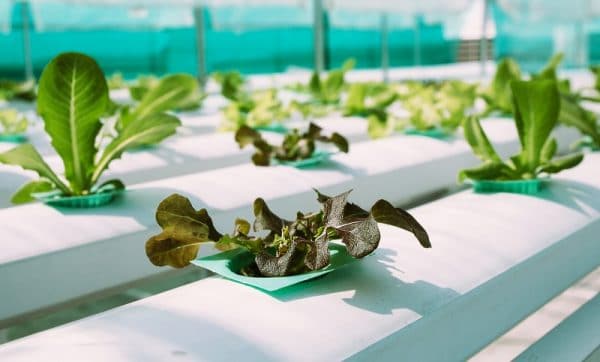


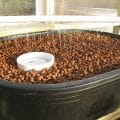
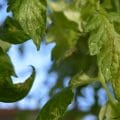
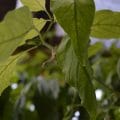
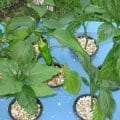

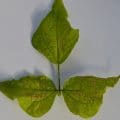
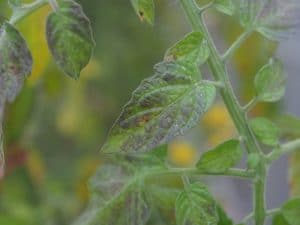
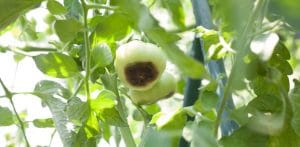
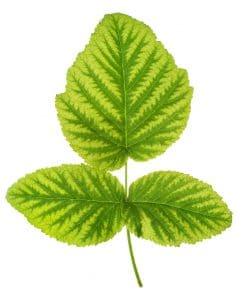
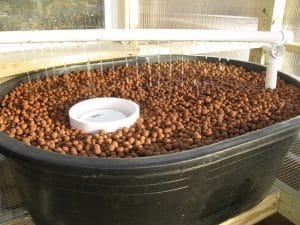
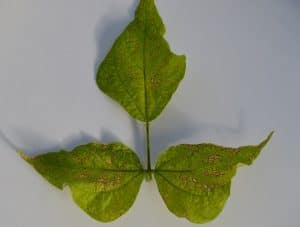
Leave A Comment